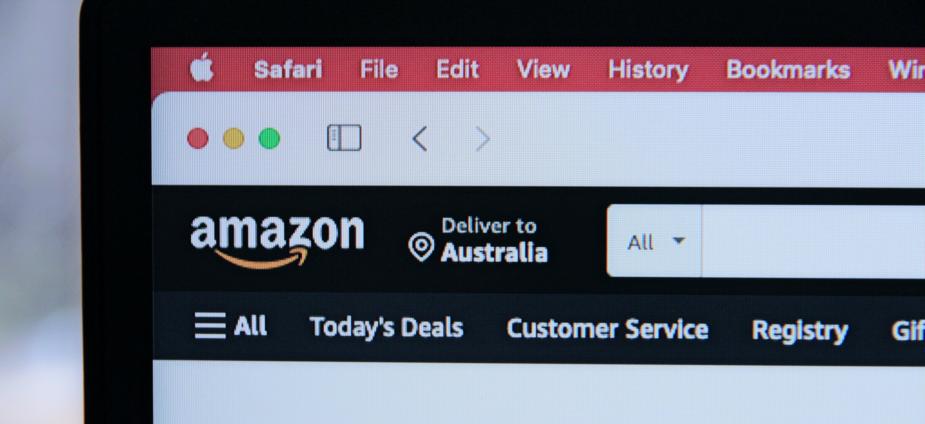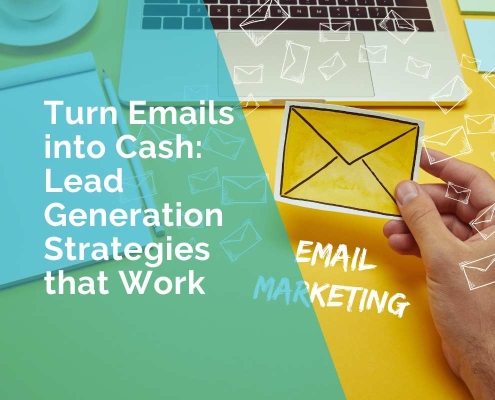9 Lessons Ecommerce Businesses Can Learn from Amazon
If you are running an ecommerce business, it’s hard to view Amazon as anything but a competitor, and a massive one at that. Amazon holds a whopping 56.7% of the ecommerce market in the US alone, which makes it a true juggernaut and pretty much the default option for most people when it comes to online shopping. To make matters worse, it’s hard to imagine ever coming close to it, since Amazon is sitting on a goldmine of data that enables the brand to get into the minds of its customers.
However, if you can manage to put all of your disdain for Amazon aside (which shouldn’t be too hard, as you are probably one of their customers as well), its practices and tactics can serve as an inspiration for your ecommerce business. And you only need a fraction of the sales Amazon makes every year in order to make your business extremely successful. Here are nine things your ecommerce business can learn from Amazon in order to grow.
1. Page Load Time Matters More Than You Think
Having an ecommerce website that loads quickly definitely plays a huge role in optimal UX, but it affects aspects of your business, too. For instance, with every additional second of load time (during the first five seconds), the website conversion rate drops by 4.42% on average. In this day and age, you are basically fighting for your customers’ attention. And while you can’t control their actions, you can do everything on your end to make sure your ecommerce website loads as fast as possible.
What page speeds are we talking about here? Well, the desktop version of Amazon’s website takes only 2.3 seconds to load, while its mobile version takes 1.14 seconds.
Obviously, your ecommerce business doesn’t have access to the resources and infrastructure Amazon does, but there are a number of things you can do to make your website fast. They include:
- compressing your images
- reducing your redirects
- enabling browser caching
- using a CDN, etc.
2. Make Decisions Based on Data
Amazon has all the data and the resources it needs in order to provide the ultimate user experience for its shoppers and to target potential shoppers effectively. This approach also extends to all businesses that operate through the platform, and it’s especially important for Amazon sellers who are trying to expand their reach through PPC advertising. Individual sellers can use Amazon PPC management services to optimize their advertising campaigns by harnessing valuable data to reach their target audiences.
You can use analytics software to gather data about your customers, such as the devices they used to visit your online store and whether they found your business through organic or paid traffic. Conduct A/B tests for each page element, from your calls to action and landing page copy to shopping cart layouts and checkout system.
Finally, you can simply ask your customers how you can improve by conducting surveys. Each of these things is done by Amazon on a daily basis.
3. Address Your Customers’ Major Pain Points
One of the reasons why Amazon is so successful is that it provides the best possible online shopping experience for its customers. While ecommerce makes things easier by enabling people to shop from the comfort of their homes, it still needs to address the common pain points of its customers, such as:
- High shipping costs
- Complicated checkout process that requires shoppers to create an account
- Difficulties with exchanges and returns.
All of these are major reasons for cart abandonment. In order to remedy this, Amazon offers free shipping to its Prime users. Also, if you want to return any of the products you have ordered from Amazon, you can do so for free or even drop them off at one of their stores or lockers.
4. Make Sure Your Customers Can Reach You
In addition to providing a superior user experience for customers, Amazon is no slouch when it comes to customer support. It offers multiple channels through which shoppers can reach the company, including phone, email, and live chat. But, Amazon does a lot of work so that the customers rarely reach that point by also offering different user manuals which hold most of the answers that the shoppers are after.
Your ecommerce business may not be able to be there for its customers 24/7, but you can genuinely be there for them during working hours.
And just like Amazon, you can act preemptively by producing content that minimizes your customers’ need to reach out for your support. This includes creating a dedicated FAQ page on your website with which you will anticipate the majority of customer inquiries, detailed product descriptions, as well as information that explains your exchange and return policy.
5. Nurture Customer Loyalty
This is the third bit of advice that revolves around customers, which just goes to show that Amazon’s customer-centric approach is the way to go.
When it comes to inspiring customer loyalty, Amazon struck gold after introducing its Prime subscription. For $14.99 a month, customers not only get to enjoy free next-day delivery, but they also gain access to Amazon’s massive music library and its video streaming, including their original series. The subscription model has enabled Amazon to create another revenue stream for itself on top of what its customer base already spends.
As far as your ecommerce business is concerned, you can offer incentives for certain customer behaviors, such as loyalty programs for those shoppers who decide to create an account or those who are repeat customers. You can also reward customer referrals or even create a subscription model of your own.
6. Leverage the Power of User Reviews
Regardless of how much money you put into marketing and pitching your products, customers are always going to be more trusting of other customers, their friends and family, and even influencers. Amazon was able to see that early on, so it allowed its customers to leave user reviews for products they purchased.
You could argue that Amazon was potentially hurting its bottom line by allowing both positive and negative reviews, but it did the exact opposite. The customers wouldn’t end up buying the inferior product, but they would find one on Amazon with stellar reviews.
By allowing your customers to leave reviews on your website and provide feedback on the products they bought from you, you not only get social proof, but you also demonstrate that you are behind your product or service 100%, which makes you trustworthy and genuine. In order to encourage your customers to leave reviews, you can send out post-purchase emails and offer incentives.
7. Patience Is Crucial
Patience is basically in Amazon’s genetic code, so to speak, because even though the company was founded back in 1994, it took seven years before it made its first profit. If that’s not a testament to the patience of Jeff Bezos and Amazon’s investors and shareholders, we don’t know what it is. They chose to forego the short-term gain and focus on playing the long game. Sure, they are the world’s largest store now, with a string of successes in the shape of Kindle Fire, Amazon Primer, and Amazon Web Services. But it took them ages to get there.
In order to grow your business, you need to be able to look at the bigger picture, past all the day-to-day operations and challenges that make it really tempting to give in and cash out the first chance you get. And opting to stick with it in the long run is all about patience.
8. Create a Personalized Shopping Experience
Nobody does this better than Amazon. Every time you visit the Amazon homepage, you will be given recommendations for products based on your previous purchases and behavior on the website. Each customer gets to have their own personalized experience that is created in line with their own needs and preferences. That way, the shopper never gets overwhelmed by sheer choice. Once you start browsing through specific product pages, Amazon will make further recommendations for products that are complementary to the ones you’ve purchased or viewed and even offer a bulk discount.
If you can afford to invest in personalization software, you can do more of the same. But, even if it’s out of your reach, you can still introduce personalization into your emails. Using the information your marketing team has collected on your customers, you can retarget them and send ads based on what they were looking at on your website or items inside their abandoned carts.
9. Provide Top-Notch On-Site Search
Amazon has one of the best on-site searches out there, enabling its customers to find what they need in a matter of seconds by simply typing in relevant keywords. This works well for both Amazon and its customers. Shoppers get to have a frictionless customer experience, while Amazon reaps the benefits of having customers who are intent on buying.
How so? Well, the customers who use the search bar are more likely to convert than those who are just browsing the website.
If your customers intend to make a purchase – and those who use the search bar usually do – make it as easy as possible for them to access the products they want. If you don’t have too many products to offer, make sure they are categorized in order to make browsing for them more streamlined.
In Closing
While it’s highly unlikely that your ecommerce business will be able to establish market domination as Amazon did, you can still make it extremely successful and profitable by emulating some of the practices used by Amazon. Start implementing them today and watch your business thrive!











